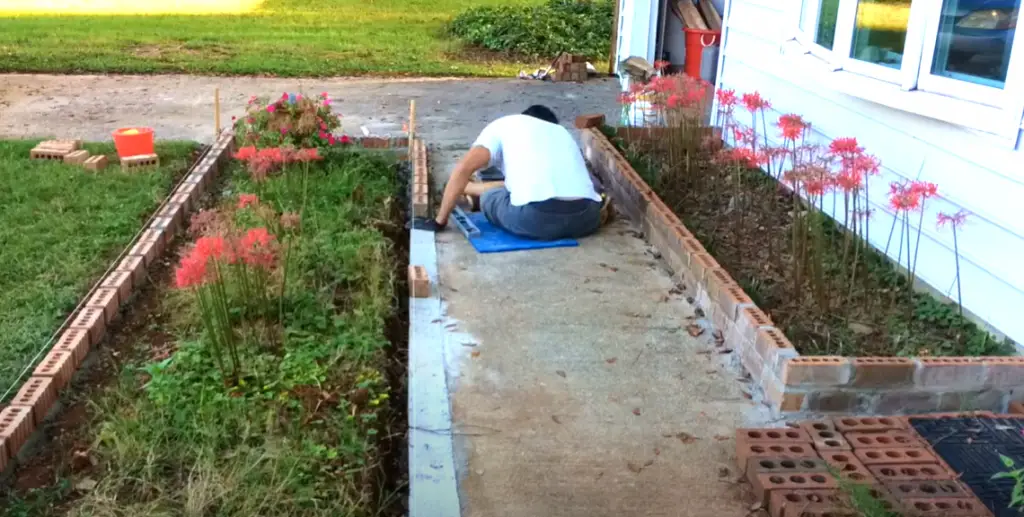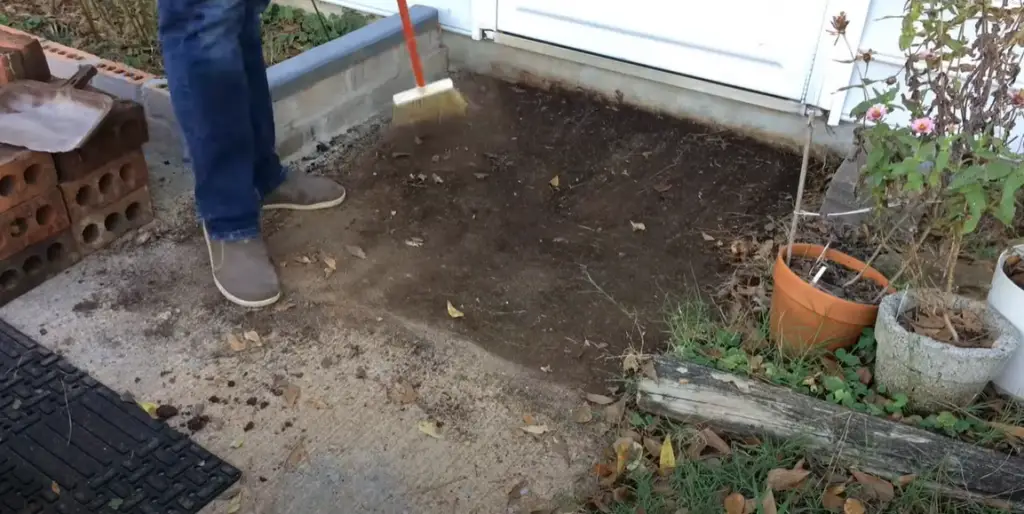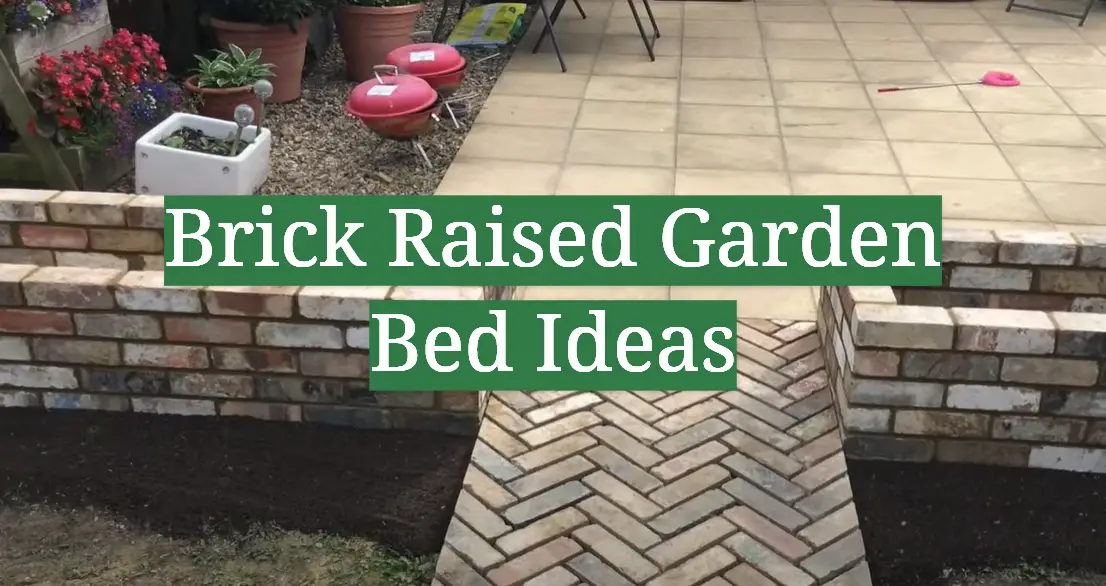Brick raised garden beds are a great way to start your garden without having to worry about the cost of lumber, soil and other supplies. Brick raised beds offer an interesting look as well as durability that can’t be matched by other materials. They also provide drainage and aeration so you can keep your plants healthy for years to come. In this article, we’ll answer some of the most frequently asked questions about brick raised garden beds and provide you with some useful tips for building them. So let’s get started!
Separating Path
One of the first questions people ask when considering brick raised beds is whether or not they need to build pathways between them. The answer is no, you don’t have to build paths if you don’t want to. However, if you do choose to create paths, it can help keep your garden neat and organized as well as provide better access to individual beds. If you plan on building pathways, make sure they are wide enough to easily move around and they should be constructed with a material that can withstand the elements such as concrete or stone. [1]
Fence Edging
Fencing is a great way of adding an accent to your brick raised garden bed. Fence edging looks stylish and serves as a barrier to contain soil and mulch while also enhancing the look of the garden bed. You can choose from various options such as picket, lattice, or wrought iron fences to match the aesthetic of your garden. Adding a fence also helps to keep small animals such as rabbits and cats from getting into the garden bed and wreaking havoc on your plants. For easy installation, you can use pre-assembled panels or create a customized design with individual bricks.
If you’re looking for an economical option, you can opt for plastic edging which is easy to install and comes in various colors. It’s also resistant to rot, making it a great choice for outdoor use. You can also use concrete edging or metal edging such as aluminum strips or steel rods for a longer lasting solution. [1]

Corner Raised Bed
Corner raised beds can be a great way to maximize space in your garden. They can be perfect for growing edibles, ornamentals or any other plants you like. These types of beds are also very easy to install and maintain compared to regular raised beds. Here are some ideas on how to build corner raised bed with bricks:
- Choose the corner of your garden where you want to build your raised bed and mark it out with a trowel or other tool. Make sure the area is level and well-drained.
- Decide on what type of bricks you’d like to use for your raised bed. It can be clay, concrete or even brick veneer.
- Begin laying down the bricks in a pattern that you like and make sure to use mortar or other adhesive between each layer of bricks to securely hold them together.
- Once the walls are built, fill the raised bed with soil and compost mix as desired and plant whatever you desire.
- Water the plants regularly and add mulch over the soil to keep it moist and help prevent weeds from taking over your raised bed. [1]
Spiral Garden
Spiral garden beds are a great way to add texture to your outdoor space. Not only do they look stunning, but they also make it easy for you to work with the land. Plus, spiral garden beds can be constructed out of almost any material, including brick! With just a few supplies and some basic instructions, you can create a beautiful brick spiral garden bed in no time.
To start, you’ll need to measure the area where your raised bed will be located. Then, mark out the pattern on the ground using string and stakes. Once you have a plan for your design, it’s time to get started building! Start by laying down a layer of brick. Make sure to leave some space between the bricks so you can fill in with dirt and plants later. [1]
Three-In-One
If you want to put a little more effort into your garden bed, then consider creating a three-in-one brick raised garden bed. By building an elevated planter that incorporates storage for soil and plants, you can create an eye-catching and functional piece of outdoor decor. Start by digging out the area where you want the planter to go and lay down a layer of gravel for drainage. Then stack bricks in circles around the perimeter, being sure to leave enough space between each brick for soil and plants. Once it’s finished, fill with potting soil, plant your favorite plants, and you’re all set! This type of raised garden bed is great if you’re short on space and need to maximize your garden’s usefulness. [1]
Circular Bed Garden
A Circular Brick Raised Garden is a great way to create a centerpiece to your garden, with all sorts of possibilities for planting and accessorizing. You can make it as small or large as you like, depending on the amount of space you have available.
Once you have your shape laid out, start laying down bricks in a circular pattern. You’ll need mortar to keep them in place, so make sure you have enough to fill any gaps between the bricks.
To create a raised garden bed, place two layers of brick around the circumference and build up your bed inwards, filling any gaps with mortar. Once you’ve finished this step, you can start planting your plants! [1]

Garden Beds Rows
Garden beds are a great way to add some extra space and beauty to your garden. One popular option is to use brick raised beds for your garden bed rows. This type of construction provides you with an attractive and sturdy solution that will last for many years. Here are some tips to help you get started on building your own brick raised garden bed.
First, measure the area you plan to use for the brick raised garden beds. Brick is heavy, so it’s important to make sure that your measurements are accurate and that you have enough space for your project. Once you’ve determined the size and layout of your garden bed rows, it’s time to start laying out the bricks.
Next, it’s important to choose the type of brick you’ll use for your garden bed rows. There are several options available, including traditional clay bricks, faux brick pavers, and even interlocking bricks. The type of brick you select will depend on the look and style you’re hoping to achieve with your project. It’s also important to consider the weight of the bricks and how much you can put on each row.
Finally, before beginning construction, make sure that your brick raised beds are securely anchored in place. This will help ensure stability throughout the lifespan of your garden bed rows. It’s also a good idea to lay down some landscaping fabric or weed barrier underneath them to help keep weeds from sprouting up in between the bricks. [1]
Brick On The Ground
If you’re looking for an easy way to upgrade your garden beds, consider adding layers of bricks on the ground. This technique is simple and can instantly add a touch of rustic charm to any outdoor space. Bricks are also great at helping retain moisture and making it easier for you to access the roots of your plants. To ensure the best results, choose bricks that are of a good size and thickness to provide the most stability.
If you’re feeling adventurous, you can even create patterns or designs with your bricks for a truly unique look. You can also add sand between layers for extra drainage benefits and stability. Alternatively, consider mixing in some gravel or pebbles to create a more textured design. [1]
Curved Bench
A curved bench is a great addition to any brick garden bed. It’s an inviting and comfortable way to lounge while tending to your plants, or just enjoying the fresh air and sunshine. You can create a cozy nook within your garden—just imagine sitting here with a good book or some quality time with friends and family! Plus, it adds a unique aesthetic to your landscape.
To create a curved bench, all you need is some bricks and mortar. Lay out the bricks in the desired shape of the bench and use mortar to secure them together. You can also add extra support by laying down pieces of rebar in between each brick layer, or adding an angle iron or two. Once the bench is completed, you can use some outdoor-grade sealant to protect the mortar from moisture and wear-and-tear. [1]

Benefits of a Brick Raised Garden Bed
Soil Quality
A brick raised garden bed can provide the perfect environment for your plants to thrive in due to its ability to help manage soil temperature, drainage, and other environmental factors. The bricks retain heat from the sun and hold it around the roots of your plants which helps them absorb nutrients more easily. Additionally, they create an environment with improved drainage which prevents waterlogging and helps control the spread of disease. [2]
Less Work
Using bricks to create raised beds also means less work for you because it doesn’t require the same amount of soil prep as traditional flat gardens. The height and structure of a brick raised bed allows for easier access, making it much simpler to maintain your garden. Plus, the walls serve as an effective boundary that helps with weed control and keeps out pests like rabbits and gophers. [2]
Extended Planting Season
The brick walls of a raised garden bed also provide extra protection during colder months. This means you can extend your gardening season by keeping plants warm and safe from frost, wind, and other harsh weather conditions. And since the walls keep in moisture better than traditional gardens, there’s less need for frequent watering. [2]
Pest Management
Another great benefit of using bricks for a raised garden bed is that they act as an effective barrier against pests. The walls help keep out animals like rabbits, deer, and other critters that can eat away at your plants. Plus, their rough texture makes it difficult for crawling insects to climb up the walls and into your garden beds. [2]

Using Recycled vs. New Bricks for a Raised Bed
When it comes to building a raised bed garden out of bricks, some folks choose to use recycled or second-hand bricks. This is a great way to save money and give new life to old materials. However, there are some drawbacks associated with using recycled or second-hand bricks that you should consider before making your decision.
One of the main drawbacks is that you might not be able to control the consistency or quality of the bricks. For example, if you’re using reclaimed materials, there’s no guarantee that all the bricks will be uniform in size and color. This may affect your overall design and make it difficult for you to achieve a consistent look. [2]
Where to Build Brick Raised Beds?
When deciding where to build your brick raised beds, it’s important to consider the amount of sun available in that spot. Generally, vegetables and herbs need at least six hours of full sun a day for optimal growth. You should also try to choose an area that is sheltered from strong winds and is not prone to flooding or water runoff.
If you’re planning on making several beds, it’s often easiest to build them in a triangular or rectangular formation so that you can easily access each bed without having to step into them. Additionally, this will help maximize the amount of sunlight that reaches each bed and provide more space for planting. [2]
FAQ
Can I use bricks for raised garden beds?
Absolutely! Bricks are a great material for raised garden beds as they offer a sturdy and attractive structure for your plants. Plus, brick is an affordable option that will last for years. Just make sure to use soil-safe bricks (such as kiln-fired clay) or consider painting the exterior of your brick frames with a sealant to help protect them from the elements.
Do you need to line a brick-raised bed?
No, you don’t need to line your brick-raised bed. However, if you want the extra protection for your soil and plants, consider adding a layer of vinyl or plastic sheeting along the interior of the walls. This will help keep moisture and weeds out while also preventing water from seeping through into other planted areas.

How tall should a brick-raised garden bed be?
The height of a brick-raised garden bed will depend on your preferences and the type of plants you plan to grow. Generally speaking, it’s best to keep the walls between 8–12 inches tall for smaller plants or 16–18 inches for larger ones. You can also choose to build taller walls and add additional layers of bricks to create a tiered effect.
Do brick planters need drainage holes?
Yes, brick planters need drainage holes. Make sure to drill small holes in the bottom of your planter before filling it with soil and plants. This will allow excess water to drain away from the roots and prevent root rot. It’s also a good idea to place a layer of small stones or pebbles at the bottom of your planter to aid with drainage.
Should raised beds to have a bottom?
Yes, raised beds should have a bottom. A layer of materials such as sand or small stones will help keep the soil in place and aid with drainage. You can also line the bottom of your raised bed with landscape fabric to prevent weeds from growing up through the soil.
What happens if you don’t have weep holes in the brick?
If you don’t have weep holes in the brick, it can lead to a buildup of moisture and water pressure. This could cause cracks or deterioration in your brick walls over time. To prevent this from happening, make sure to drill small weep holes along the bottom of each course of bricks. This will allow any excess water to drain away and reduce water pressure.
Hopefully this article has answered your questions on Brick Raised Garden Bed Ideas.
What are the gaps between bricks called?
The gaps between bricks are called “joints”. They can be filled with mortar or grout for added stability, or left open to provide ventilation. Just make sure to use a water-resistant material in the joints if your planter will be outdoors, as this will help stop rainwater from seeping into the brickwork and causing damage.
What eats brick-mortar?
Mortar is susceptible to damage from a variety of pests, including molds, fungi, and bacteria. To prevent these organisms from eating away at your brick mortar and destroying your raised garden bed, make sure to use a sealant or paint on the exterior of the bricks. Additionally, regularly inspect your brickwork for signs of damage and treat any affected areas as soon as possible.
Why do bricks have 3 holes?
Bricks typically have 3 holes for two reasons. Firstly, the holes can be used to create a better bond between bricks by having them overlap. Secondly, they provide ventilation, which helps stop moisture from accumulating and damaging your brickwork over time.
Useful Video: How to make a brick raised garden planter
Conclusion
Brick raised garden beds are a great way to bring life and beauty to your outdoor space. Whether you want to create an edible garden, herb garden, flower garden or even a pond, the possibilities with brick raised gardens are endless. With a little bit of planning, you can easily create an aesthetically pleasing and functional addition to your backyard. The key to success with this type of garden is to plan ahead and select the right materials for your budget and needs. It’s important to consider the design, size, and location of your garden before you begin building. With a bit of creativity, you can transform an ordinary backyard into something extraordinary!
We hope this article provided you with enough information to get started on your brick raised garden bed ideas. With the right materials and a bit of patience, you can create a beautiful outdoor sanctuary for all to enjoy! Happy gardening!
References:
- https://www.backyardboss.net/brick-raised-garden-ideas/
- https://kellogggarden.com/blog/gardening/making-a-brick-raised-garden-bed/










Leave a Reply
View Comments